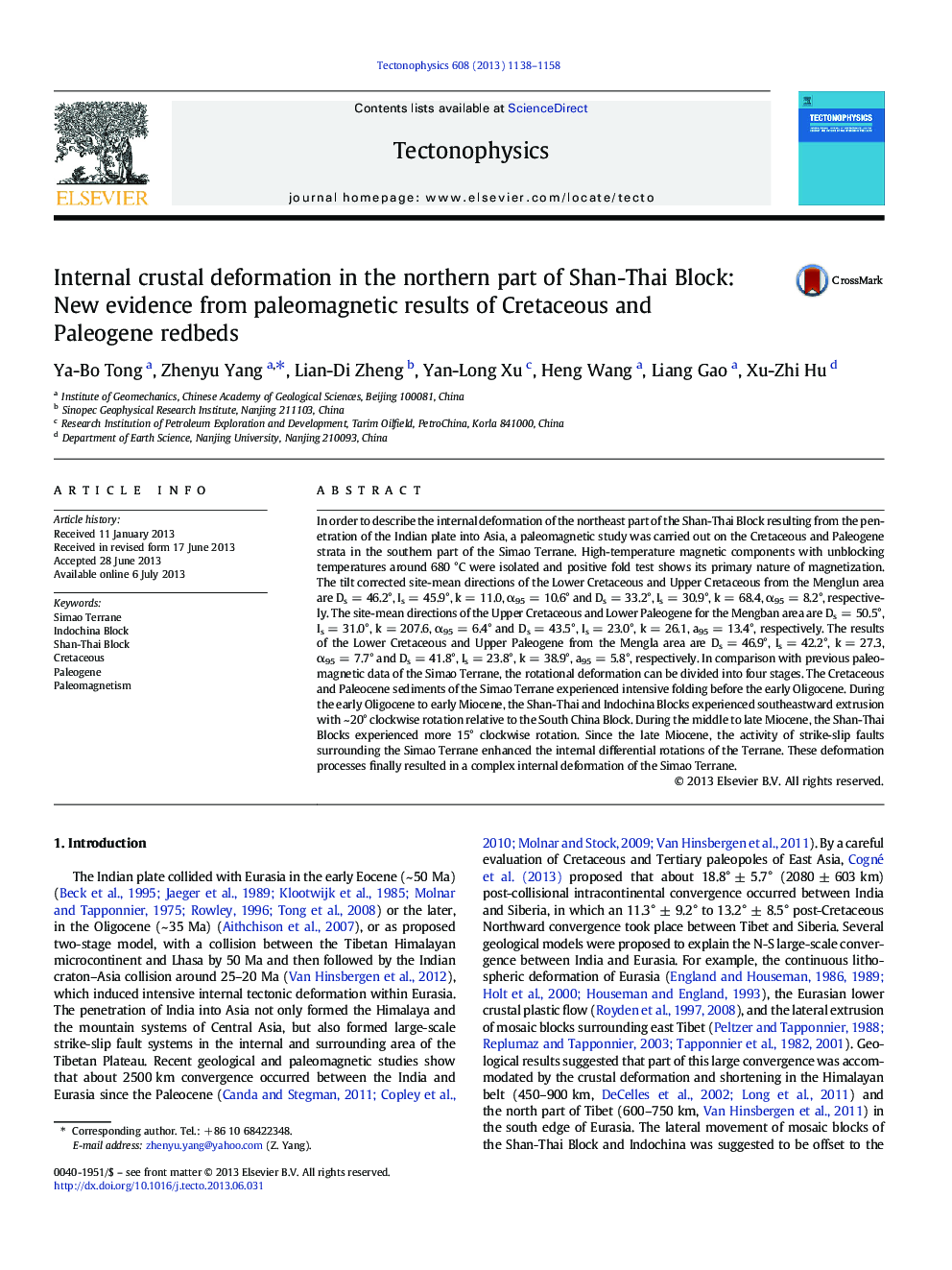| Article ID | Journal | Published Year | Pages | File Type |
|---|---|---|---|---|
| 6434049 | Tectonophysics | 2013 | 21 Pages |
â¢Cretaceous and Paleogene paleomagnetic data were carried out in the Simao Terrane.â¢Paleomagnetic data were collected for the analysis of the rotational deformation.â¢The rotational deformation controlled by the arcuate tectonic beltâ¢The crustal deformation can be divided into three deformation stages.
In order to describe the internal deformation of the northeast part of the Shan-Thai Block resulting from the penetration of the Indian plate into Asia, a paleomagnetic study was carried out on the Cretaceous and Paleogene strata in the southern part of the Simao Terrane. High-temperature magnetic components with unblocking temperatures around 680 °C were isolated and positive fold test shows its primary nature of magnetization. The tilt corrected site-mean directions of the Lower Cretaceous and Upper Cretaceous from the Menglun area are Ds = 46.2°, Is = 45.9°, k = 11.0, α95 = 10.6° and Ds = 33.2°, Is = 30.9°, k = 68.4, α95 = 8.2°, respectively. The site-mean directions of the Upper Cretaceous and Lower Paleogene for the Mengban area are Ds = 50.5°, Is = 31.0°, k = 207.6, α95 = 6.4° and Ds = 43.5°, Is = 23.0°, k = 26.1, a95 = 13.4°, respectively. The results of the Lower Cretaceous and Upper Paleogene from the Mengla area are Ds = 46.9°, Is = 42.2°, k = 27.3, α95 = 7.7° and Ds = 41.8°, Is = 23.8°, k = 38.9°, a95 = 5.8°, respectively. In comparison with previous paleomagnetic data of the Simao Terrane, the rotational deformation can be divided into four stages. The Cretaceous and Paleocene sediments of the Simao Terrane experienced intensive folding before the early Oligocene. During the early Oligocene to early Miocene, the Shan-Thai and Indochina Blocks experienced southeastward extrusion with ~ 20° clockwise rotation relative to the South China Block. During the middle to late Miocene, the Shan-Thai Blocks experienced more 15° clockwise rotation. Since the late Miocene, the activity of strike-slip faults surrounding the Simao Terrane enhanced the internal differential rotations of the Terrane. These deformation processes finally resulted in a complex internal deformation of the Simao Terrane.
